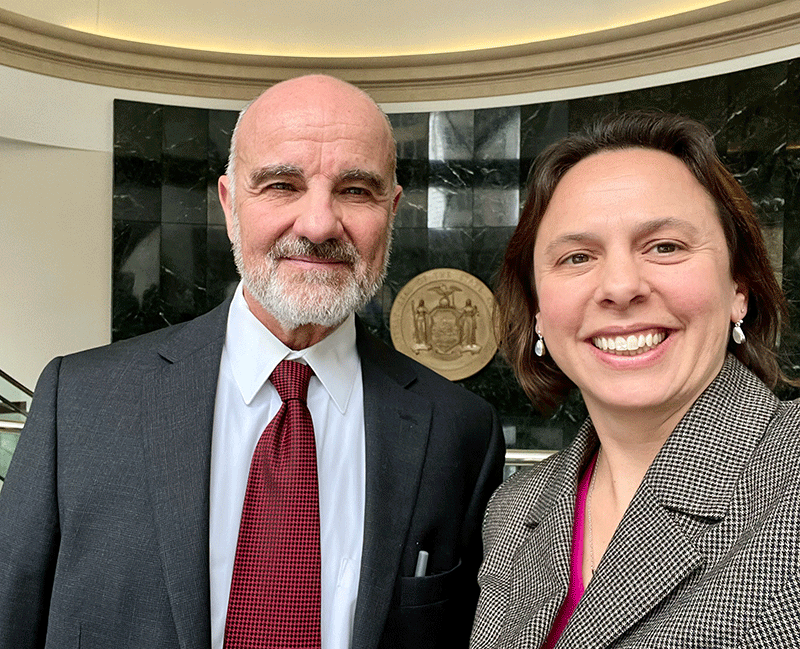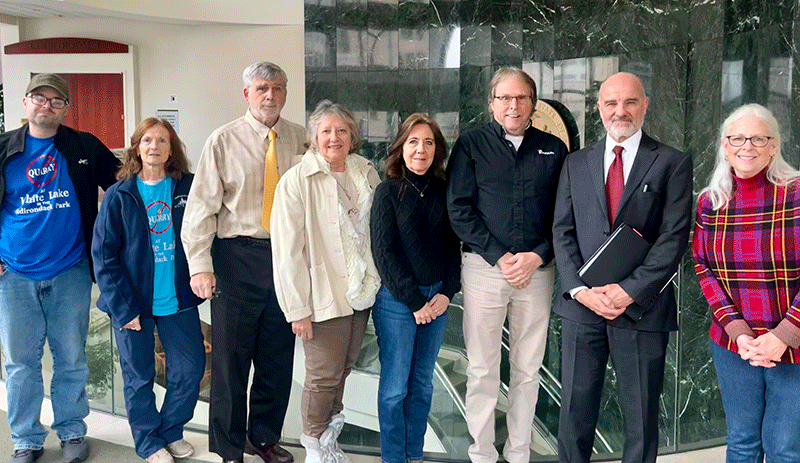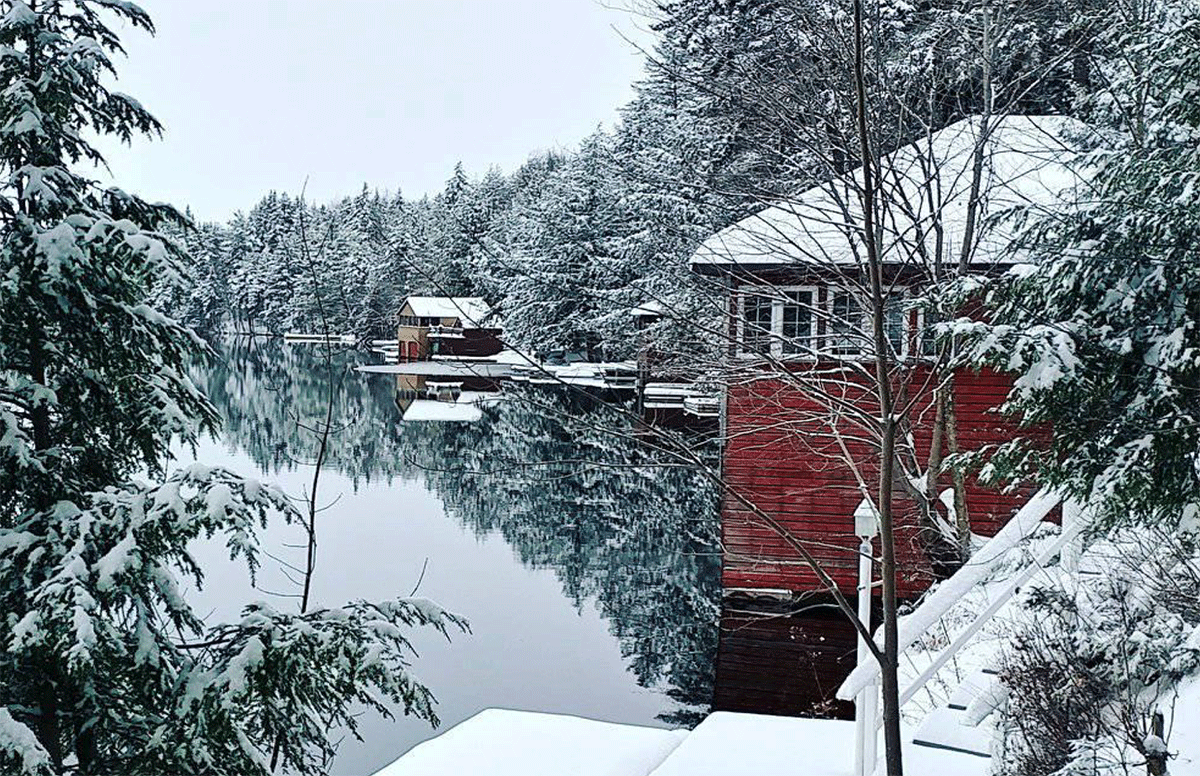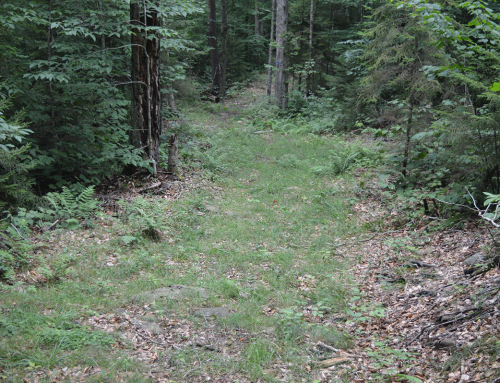On Monday January 8, 2024, PROTECT Conservation Director and Counsel Christopher Amato argued an appeal of a trial court’s approval of the permitting by the Adirondack Park Agency (APA) of a new mining operation in the White Lake community in the Adirondack Park. The appeal was argued before a five-judge panel of the Appellate Division, Fourth Department, which sits in Rochester. The initial lawsuit was filed on behalf of the Adirondack White Lake Association and Protect the Adirondacks, drafted and submitted by the Pace Environmental Law Clinic. The initial lawsuit challenged the decision to issue a permit and not hold an official adjudicatory hearing. A decision was rendered on September 22, 2022 by the State Supreme Court in Oneida County that upheld the APA permit.
Click here to watch the archived video of the oral arguments (the White Lake case begins at 1:15).
The new mine, proposed by Red Rock Quarry Associates, LLC (Red Rock), will be located on a 56-acre parcel of land in the Town of Forestport, Oneida County. The project site is a forested parcel of land lying directly adjacent to the White Lake residential community, which is comprised of both year-round and seasonal residents, including approximately 445 homeowners who are members of the Adirondack White Lake Association (AWLA). Numerous residences are in close proximity to the mine site, with approximately 20 homes located within one quarter mile. The proposed mining operation will involve drilling, blasting, on-site crushing of rock, and up to twenty heavy-duty truck trips per day entering and leaving the site. These mining activities are proposed to occur for the next 25 years over approximately 26 acres.

PROTECT attorneys Christopher Amato and Claudia Braymer at the Appellate Division Courthouse in Rochester, NY.
More than 3,000 public comments opposing the proposed mining project were received by the APA. PROTECT and the AWLA submitted a 60-page report prepared by an environmental consulting firm that identified significant deficiencies in Red Rock’s application, including the failure by the applicant to comply with key aspects of the Department of Environmental Conservation (“DEC”) methodology for measuring noise impacts and the failure to accurately identify the location of the principal drinking water aquifer underlying the project site. Based on these significant application deficiencies, and the substantial public opposition to the project, PROTECT and AWLA argued that the APA was required under its regulations to hold an adjudicatory public hearing on the application.
The Red Rock application was considered by the APA Board at its meeting on January 13 and 14, 2022. Despite the fact that the APA Board needed to determine whether to hold an adjudicatory hearing on the application, at no time during their presentation to the Board did the Agency staff present, discuss, or analyze the Agency’s regulatory criteria for holding an adjudicatory hearing. Instead, Agency staff repeatedly alluded to a fabricated criteria that does not appear in either the APA Act or the Agency’s regulations. Moreover, the Agency staff’s presentation was biased and one-sided, because it failed to inform the APA Board of the full extent of public opposition to the project and mischaracterized the project’s impacts on the neighboring residential community. On January 14, 2022, the APA Board determined not to hold an adjudicatory hearing on the Red Rock application and voted to issue the mining permit. The permit was issued that same day.
In March, 2022, PROTECT and the AWLA filed a legal challenge to the APA’s decision to issue the permit without first holding an adjudicatory hearing and sought to annul the permit. The trial court dismissed the case, concluding the APA had acted reasonably in deciding not to hold an adjudicatory hearing before issuing the permit, and we appealed. PROTECT’s legal team of Christopher Amato and Claudia Braymer, Deputy Director, along with Professor Todd Ommen and law student Daniel Conte from the Pace Environmental Litigation Clinic prepared for the oral arguments with virtual mock argument sessions in advance of the court date. On January 7, Chris and Claudia traveled through the snowstorm to reach Rochester for the in-person arguments the next morning. Several AWLA members made the trip to the courthouse to attend the arguments as well.

Christopher Amato with members of the Adirondack White Lake Association at the Appellate Division Courthouse in Rochester.
Chris Amato, who argued the case on behalf of the Appellants, offered a moving synopsis about the importance of this case and the detrimental noise impacts to the community. He adeptly answered numerous difficult questions from the Justices, who had clearly studied the briefs and the record of the case. The Justices asked several difficult questions of the attorney from the Attorney General’s Office who was representing the APA. Notably, one of the Justices asked when the last time the APA held an adjudicatory hearing and stated that it seems that the Agency has decided that it is never going to hold a hearing again. The attorney for the APA responded that the last hearing was in 2007 and that it was difficult, time-consuming, and led to future litigation, so permit applicants have been avoiding hearings by modifying or withdrawing their proposals when staff indicate that the proposal may go to a hearing.
It is impossible to predict how the court will rule, but our arguments were well-received, and we trust that they will be fairly considered by the Justices as they deliberate our appeal. We hope to have a decision in the coming weeks or months.
The decision will be posted on the Appellate Division’s website when it has been issued.
The appeal challenges the determination by the APA not to hold an adjudicatory hearing prior to granting Red Rock Quarry Associates a permit to establish a new granite mining operation in the residential community of White Lake in the Adirondack Park. The appeal focuses on the following issues:
- Did the determination by the Adirondack Park Agency (APA) not to hold an adjudicatory hearing on anapplication to locate a new mining operation adjacent to a residential community have a rational basis when in reaching that determination the APA failed to consider or apply its regulatory criteria for holding adjudicatory hearings?
- Supreme Court found the APA had acted rationally in not considering or applying the regulatory criteria when determining not to hold an adjudicatory hearing.
- Did the APA’s determination not to hold an adjudicatory hearing have a rational basis even though it was based on a biased and one-sided presentation by the APA staff that mischaracterized both the factual record and the standards for holding an adjudicatory hearing?
- Supreme Court did not directly consider whether the presentation by the APA staff was biased and one-sided but found that the APA had acted rationally.
- Did the APA’s determination not to hold an adjudicatory hearing have a rational basis when the APA’s regulatory criteria were met by Appellants’ submission of a report from an environmental consulting firmraising significant noise and water quality issues and the submission of more than 3,000 public comments opposing the application?
- Supreme Court concluded that the issues raised by Appellants did not warrant an adjudicatory hearing and did not consider the public opposition to the proposed
APA’s determination not to hold an adjudicatory hearing was: (i) made without considering or applying theAPA’s own regulatory criteria for holding an adjudicatory hearing; (ii) based on a one-sided, factually and legally incorrect presentation by APA staff; (iii) made despite Appellants’ submission of a detailed report from an environmental consulting firm demonstrating significant flaws in the Applicant’s noise impact and water quality analysis; and (iv) made despite the submission of over 3,000 public comments opposing the miningproject and the raising by Appellants and other commenters of substantive and significant issues concerning the project’s impacts.
For all these reasons, the lower court decision should be overturned.
Click here to read to the appeal.






